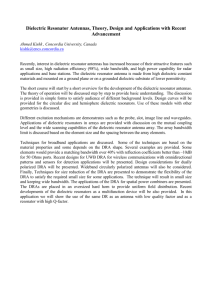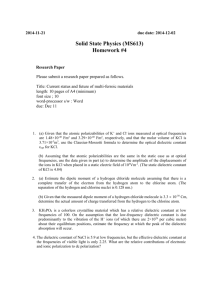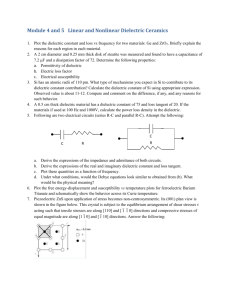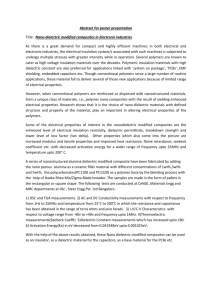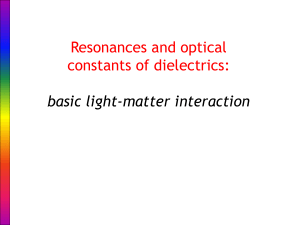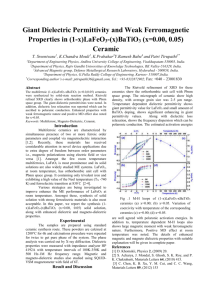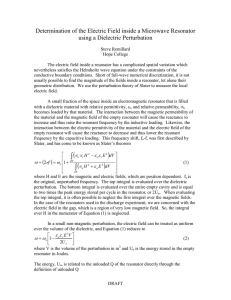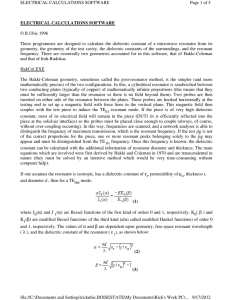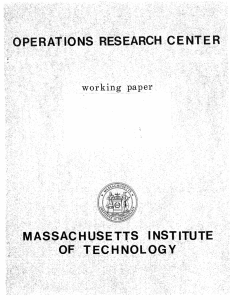Supported Information: Surface-enhanced molecular spectroscopy
advertisement
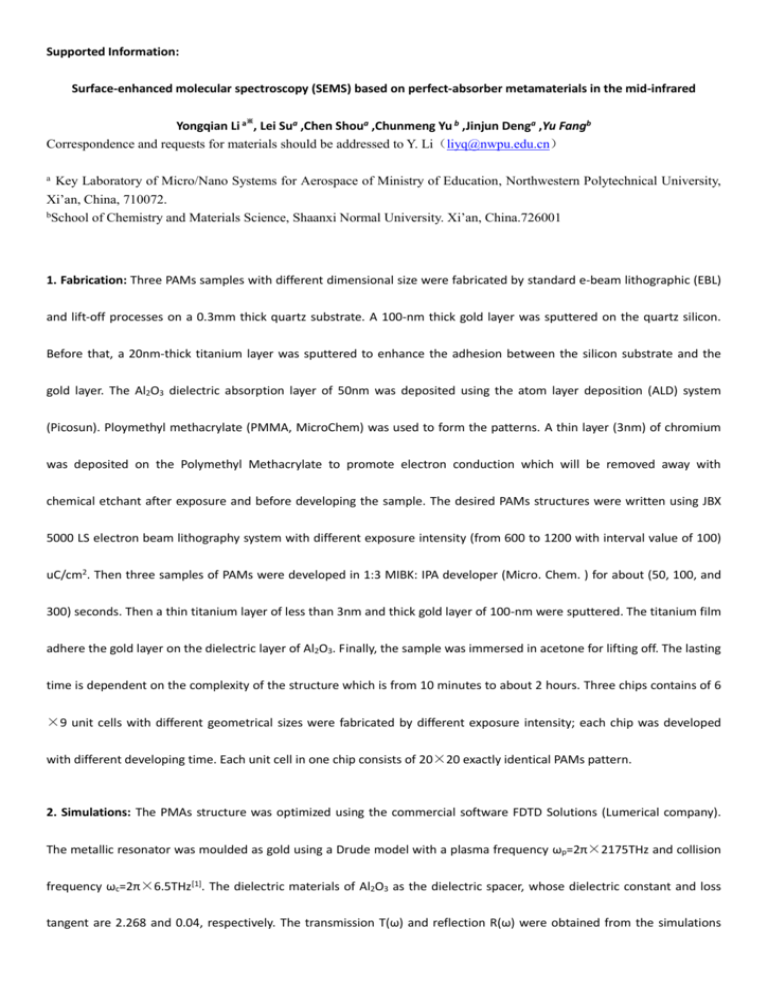
Supported Information: Surface-enhanced molecular spectroscopy (SEMS) based on perfect-absorber metamaterials in the mid-infrared ※ Yongqian Li a , Lei Sua ,Chen Shoua ,Chunmeng Yu b ,Jinjun Denga ,Yu Fangb Correspondence and requests for materials should be addressed to Y. Li(liyq@nwpu.edu.cn) a Key Laboratory of Micro/Nano Systems for Aerospace of Ministry of Education, Northwestern Polytechnical University, Xi’an, China, 710072. bSchool of Chemistry and Materials Science, Shaanxi Normal University. Xi’an, China.726001 1. Fabrication: Three PAMs samples with different dimensional size were fabricated by standard e-beam lithographic (EBL) and lift-off processes on a 0.3mm thick quartz substrate. A 100-nm thick gold layer was sputtered on the quartz silicon. Before that, a 20nm-thick titanium layer was sputtered to enhance the adhesion between the silicon substrate and the gold layer. The Al2O3 dielectric absorption layer of 50nm was deposited using the atom layer deposition (ALD) system (Picosun). Ploymethyl methacrylate (PMMA, MicroChem) was used to form the patterns. A thin layer (3nm) of chromium was deposited on the Polymethyl Methacrylate to promote electron conduction which will be removed away with chemical etchant after exposure and before developing the sample. The desired PAMs structures were written using JBX 5000 LS electron beam lithography system with different exposure intensity (from 600 to 1200 with interval value of 100) uC/cm2. Then three samples of PAMs were developed in 1:3 MIBK: IPA developer (Micro. Chem. ) for about (50, 100, and 300) seconds. Then a thin titanium layer of less than 3nm and thick gold layer of 100-nm were sputtered. The titanium film adhere the gold layer on the dielectric layer of Al2O3. Finally, the sample was immersed in acetone for lifting off. The lasting time is dependent on the complexity of the structure which is from 10 minutes to about 2 hours. Three chips contains of 6 ×9 unit cells with different geometrical sizes were fabricated by different exposure intensity; each chip was developed with different developing time. Each unit cell in one chip consists of 20×20 exactly identical PAMs pattern. 2. Simulations: The PMAs structure was optimized using the commercial software FDTD Solutions (Lumerical company). The metallic resonator was moulded as gold using a Drude model with a plasma frequency ωp=2π×2175THz and collision frequency ωc=2π×6.5THz[1]. The dielectric materials of Al2O3 as the dielectric spacer, whose dielectric constant and loss tangent are 2.268 and 0.04, respectively. The transmission T(ω) and reflection R(ω) were obtained from the simulations with perfect matching boundary conditions. The chosen plane wave incidents with the wave vector perpendicular to the resonator plane, in which both electric and magnetic field vectors are paralleled to plane. The frequency dependent absorption was calculated as A(ω)=1-T(ω)-R(ω). 3.Optical characteristics: The absorption spectra of the PAMs arrays with and without Parylene-C film were characterized using an Fourier-transform infrared spectrometer (FTIR) (Vertex80V, Bruke) equipped with an infrared microscope (Bruke, Hyperion 2000) and a liquid nitrogen cooled mercury cadmium telluride (MCT) detector. All spectral data were normalized to those collected from the bare silicon substrate. In all case, both the background and the sample spectral data were acquired at a resolution of 4cm-1 and consist of 128 scans. The optical constant (n,k) and the thickness of Parylene-C film was probed independently through ellipsometer (Variable angle spectroscopic ellipsometer, Woollam). [1]P. B. Johnson and R. W. Christy, "Optical Constants of the Noble Metals," Phys Rev B 6 (12), 4370-4379 (1972)
